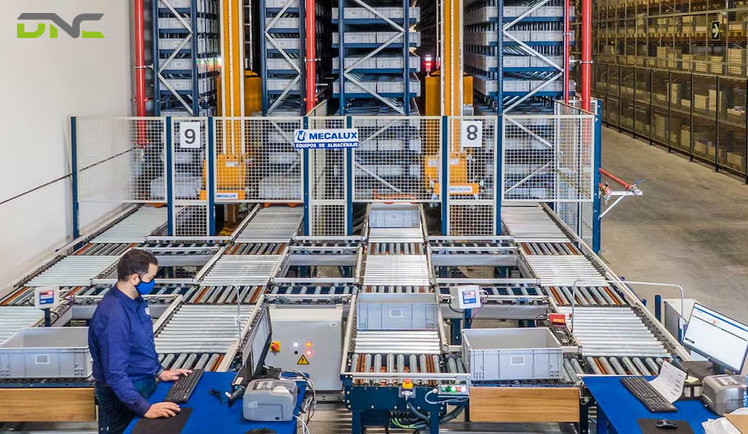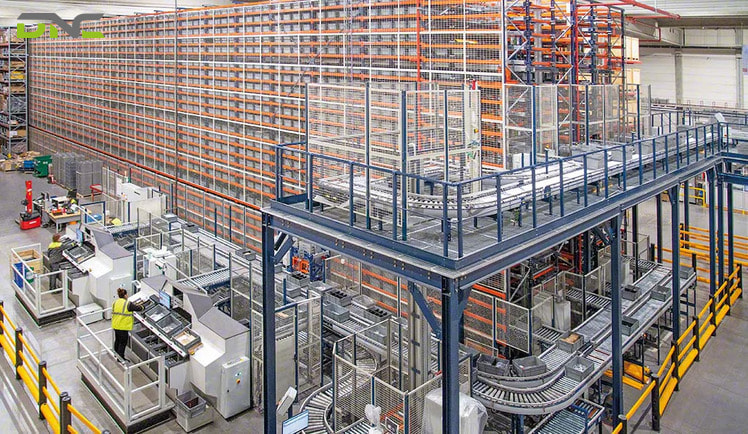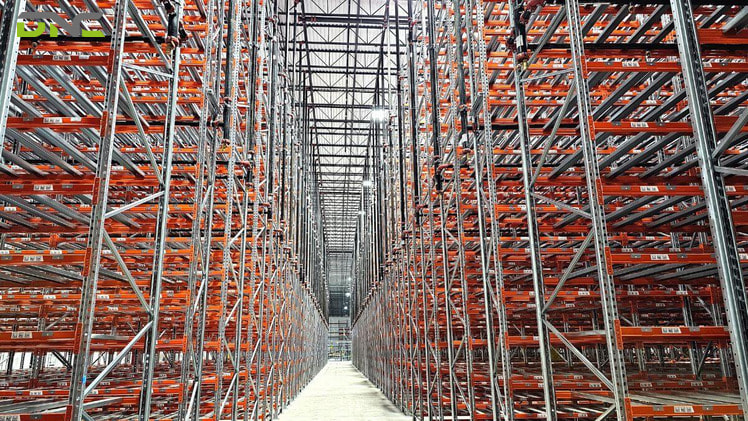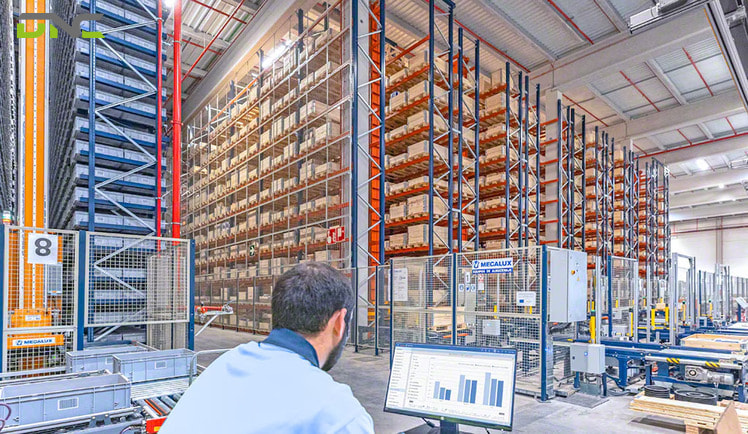How Warehouse Automation Systems Reduce Costs and Boost Accuracy
Applying modern warehouse management systems such as WMS, sorting robots, autonomous vehicles or automated storage technology helps optimize space, save manpower and increase order processing speed. The following article by DNC Automation will help you understand why businesses should invest in smart warehouses and popular solutions that are widely applied today.
Why is automation needed in warehouse management?
Challenges of traditional warehouses
Traditional warehouses, although having existed for a long time, have revealed many limitations when applied in modern production and distribution environments. The following issues are barriers that prevent many businesses from achieving the desired performance in the storage and processing of goods.
- Errors due to manual operations: Manual data entry and output can easily lead to confusion, loss of goods or incorrect inventory data.
- Labor-intensive: Tasks such as arranging, inventorying, and transporting goods require a large workforce and high operating costs.
- Slow processing speed: The process of receiving, sorting, and delivering goods takes a long time, affecting operational efficiency.
- Difficult to control and optimize space: Unreasonable arrangement of goods causes warehouse space to be wasted, making it difficult to retrieve goods when needed.
- Lack of real-time integration and tracking: Traditional warehouses do not provide timely data for quick and accurate decision making.
Benefits of applying automation to warehouses
To overcome the inherent limitations of traditional warehouses, integrating automation technologies is a strategic move. Not only does it help improve performance, automation also opens up the possibility of smarter, faster and more accurate warehouse control than ever before.
- Increase operational accuracy: Automated systems such as WMS, robots, sensors, etc. help limit operating errors and closely monitor all activities in the warehouse.
- Save on labor costs: Repetitive tasks such as transportation, sorting, inventory, etc. are automated, reducing dependence on manual labor.
- Improve order processing speed: Thanks to automated equipment, goods are processed faster, shortening delivery times.
- Optimize storage space: Automated storage systems (such as AS/RS) help arrange goods scientifically, making the most of warehouse space.
- Easy to expand and integrate: Automation solutions can connect to ERP and IoT systems, helping businesses easily expand their scale and improve overall management capabilities.

Why is automation needed in warehouse management?
What is the process of implementing warehouse automation solutions?
To effectively apply automation solutions, businesses need to follow a systematic process from field survey to official operation. Below are 5 common implementation steps in this process.
Step 1: Assess the current status of the warehouse
Businesses need to carefully survey the infrastructure, scale, flow of goods and current operating processes to identify bottlenecks and specific needs. This is an important basis for choosing the right solution.
Step 2: Plan and design the system
Based on the survey data, the implementation unit will propose a technical solution including components such as WMS, automatic equipment, storage systems, etc. The detailed design will ensure that the system optimizes space and workflow.
Step 3: Deployment, installation and integration
Automated equipment such as conveyors, robots, sensors, etc. will be installed according to the design. At the same time, the warehouse management software is integrated with the ERP or MES system to synchronize operational data.
Step 4: Testing, testing and training
Before being put into official use, the entire system will be tested and tested to ensure stable operation. Employees are also trained to use the software and handle basic situations.
Step 5: Official operation and maintenance
After acceptance, the system is put into operation. The solution provider will continue to provide technical support, software updates and periodic maintenance to ensure long-term effectiveness.

5 common implementation steps in this process
What are the popular warehouse automation solutions today?
Depending on the size of the warehouse and operational needs, businesses can choose from a variety of automation solutions. Below are some of the most widely used technologies and systems today.
- Warehouse management system (WMS): WMS is software that helps track and control the entire import – export – inventory process in real time. This solution supports optimizing storage locations, inventory warnings and minimizing errors due to manual operations.
- Automated storage and retrieval system (AS/RS): AS/RS includes high-rise shelves combined with automatic forklifts or robotic arms to store and retrieve goods. This solution helps save space, increase retrieval speed and reduce the risk of accidents.
- AGV/AMR: AGV (Automated Guided Vehicle) and AMR (Autonomous Mobile Robot) are vehicles that automatically move in the warehouse without manual control. They help transport goods quickly, flexibly and reduce the burden on workers.
- Conveyors and automatic sorting systems: Automatic conveyors support the movement of goods from one area to another without the need for forklifts or manual labor. When integrated with sensors and software, the system can also automatically sort products by weight, item code or order.
- Identification technology (Barcode, RFID): Barcode scanning and RFID technology allows for real-time control of the location, quantity and status of goods. This is an indispensable tool in smart warehouses to support quick inventory and easy traceability.
What are the applications of warehouse solutions in industries?
Warehouse automation is no longer a trend but has become a core factor that helps businesses optimize operations. Depending on the specifics of the industry, warehouse automation solutions are adjusted to improve performance and minimize risks.
- Logistics and e-commerce: In the logistics and e-commerce industry, automation helps process orders faster and more accurately. Systems such as sorting robots, conveyors, and AGVs shorten packaging and delivery times.
- Industrial production: The manufacturing industry uses warehouse solutions to ensure that materials are delivered to the production line in a timely manner. Self-driving vehicles and automated storage systems support the fast and safe transportation of raw materials.
- Food and pharmaceuticals: RFID technology makes it easy to trace the origin and expiration date. Thanks to that, businesses can better control product quality and safety.

What are the applications of warehouse solutions in industries?
What is a reputable automated warehouse systems provider in Malaysia?
If you are uncertain about where to purchase an automated warehouse system, DNC Automation is an excellent option for you. Many customers have trusted DNC to provide automation solutions in the production process and have had positive experiences because:
- DNC is a leading technology, automation, and engineering company in Malaysia with over 15 years of experience in the field of automation
- System integration machinery, Internet of Things (IoT), Industry 4.0, and WinCC Scada System
- Diverse designs and sizes are suitable for many domestic and foreign houses. The equipment is 100% genuine and imported from Malaysia.
Please contact us via the hotline below if you have any questions about the product, we are happy to answer you!
- 0 views
- 0 Comment




Recent Comments